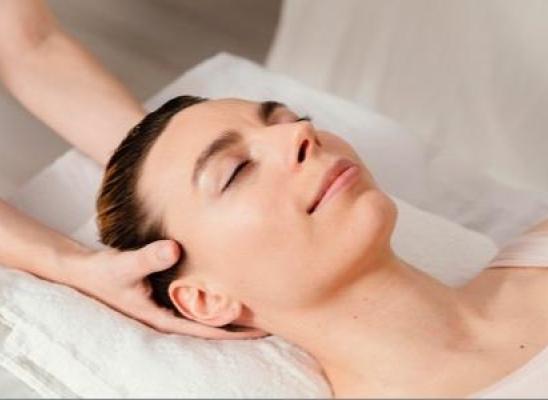A Guide to Habit Reversal Training for Skin Picking

Online test
Find out the severity of your symptoms with this free online test
While skin picking is more than just something one might consider a “bad habit”, it does have qualities that are in line with habits and habit formation. So, it’s not a coincidence that Habit Reversal Training (HRT) is the standard treatment for skin picking. It is an approach that can help you to break the cycle of picking and learn new ways of coping with triggers. In a recent SkinPick webinar, Dr. Vladimir Miletic takes a closer look at the components of HRT and presents a three-stage model that you can use to reduce picking behaviors.
What Is HRT?
HRT is a behaviorally-based approach to treating repetitive behaviors. It has been shown to be particularly effective in treating body focused repetitive behaviors (BFRBs) such as skin picking, hair pulling, lip biting, and tics. Studies have found that HRT works well as both a stand-alone treatment and when combined with other treatment approaches such as Acceptance and Commitment Therapy. These combined approaches are thought to address both the behavioral and the cognitive aspects of picking behavior. Therapists often use a combined approach to treating BFRBs.
HRT addresses the behavioral component of skin picking. It does not address underlying causes. HRT works by helping you to break the “habit” or stop the behavior you want to stop by replacing it with a more desirable behavior. The HRT approach consists of components that are each designed to address an aspect of the behavior. The beauty of HRT is that it is an approach that you can learn to do on your own.
Traditional HRT consists of a 5-component model:
- Awareness Training
- Competing Response Training
- Contingency Management
- Relaxation Training
- Generalization Training
Dr. Miletic describes HRT in a 3-stage approach to easily implement the practice and, if you choose, integrate with a complimentary approach such as ACT.
Stage One: Awareness Training
Awareness training is considered the most important stage of HRT. This stage is also the one that most people want to skip over or rush through. Dr. Miletic emphasizes that “This is always and without exception the wrong thing to do.” It’s easy to think, “I already know I pick”, but do you really understand it?
Awareness is more than just noticing that you’re picking. Awareness training brings attention to skin picking in a way that helps you to understand the details of its functioning:
- What are the thoughts and feelings related to the picking before, during, and after?
- What triggers your skin picking?
- What are the mechanics of the movements? How do you pick?
- In what context does your picking usually take place?
To begin awareness training, start by writing down everything you can about your skin picking episode each time it occurs. Pay attention to emotions, sensations, and thoughts you might experience. Think about what was happening just prior to the picking. What were you thinking or feeling? These “just before” thoughts, feelings, and sensation can represent triggers or your interpretation of a trigger event. Also pay attention to the actual picking. How did you pick? What does that look and feel for you? And, think about what happened after. How did you feel? Did you experience an emotional release or sense of emotional gratification?
Describe your experience in ways that make sense to you. The more detail you can identify, the more awareness you’re creating and finding clues that can help you to change the behavior.
One way to increase awareness is to practice mindfulness. One of the practices Dr. Miletic recommends is doing body scans to help you remain in touch with what you’re experiencing.
Dr. Miletic emphasizes the need to document your experience in some way, whether it’s an app such as the SkinPick app or a journal. Simply keeping it in mind isn’t enough. You’re collecting data that you will need as you enter the next stages of treatment. After at least two weeks of awareness training, you may have enough data to take your next step.
Stage Two: Competing Responses
Competing responses are actions that are meant to “compete” with and replace skin picking. It is usually recommended that the competing response be something that is “opposite” to the behavior you’re trying to replace. Dr. Miletic suggests not getting caught up in that rule and finding simply finding actions that easy, discrete, and work for you.
Ideally, you want to choose things that you can do across multiple settings. Dr. Miletic recommends choosing one action to start with rather than choosing multiple actions. His rule of thumb is keeping it simple but not so simple that it doesn’t work.
Whatever you choose, it’s important that it be easy to use and accessible. If you choose an object, say a stress ball, you may want to keep several available in different places like your desk, your bag, your car, etc. The best competing response is the one you’ll use and can use when you need it.
Some ideas for competing responses include:
- Clenching your fist
- Spinner (rings, fidgets)
- Stress balls
- Rosary or mala beads or worry stones
- Fabric (e.g., Velcro)
- Hand grippers
- Knitting or crochet
It’s important that you choose your competing response rather than having someone choose for you. Choosing your own action allows you to take responsibility for your choice.
Expect that in the beginning, you will make mistakes even with the perfect choice. Dr. Miletic addresses the issue of failure through the lens of a learning opportunity. In the beginning of learning something new, failure happens. We learn by trial and error. If you find yourself failing consistently, look at your data tracking for patterns. Is your choice of competing response not working for you? Are you losing motivation? Something else? Keeping track of your picking can give you so much useful information. You might even return to a few weeks of awareness training. The key is to start with a stable foundational habit.
Stage Three: Evaluation and Further Work
This is where it all comes together. Changing behavior doesn’t happen overnight. Learning to use a competing response takes time and intentional practice.
Habits don’t happen in isolation. They occur in a larger context. Dr. Miletic recommends, when possible, practicing your competing response in those spaces where the picking happens even when you’re not experiencing urges. Alternatively, a daily practice of 10 to 15 minutes a day using your competing response can help to build the new behavior.
Continue using your journal or tracking app. In addition to tracking your practice, you can also document other aspects of your experience. Writing about the effects of skin picking on your life and mental health can be motivating. As you see your progress, you gain insight and confidence that you can manage your skin picking.
To view this webinar, visit the SkinPick.com YouTube channel. You can also subscribe to the SkinPick.com newsletter and YouTube channel to receive notifications about the next webinar.
Webinar Link: https://www.youtube.com/watch?v=7zz17W-Icms
Online test
Find out the severity of your symptoms with this free online test
Start your journey with SkinPick
Take control of your life and find freedom from skin picking through professional therapy and evidence-based behavioral techniques.
Start Now



